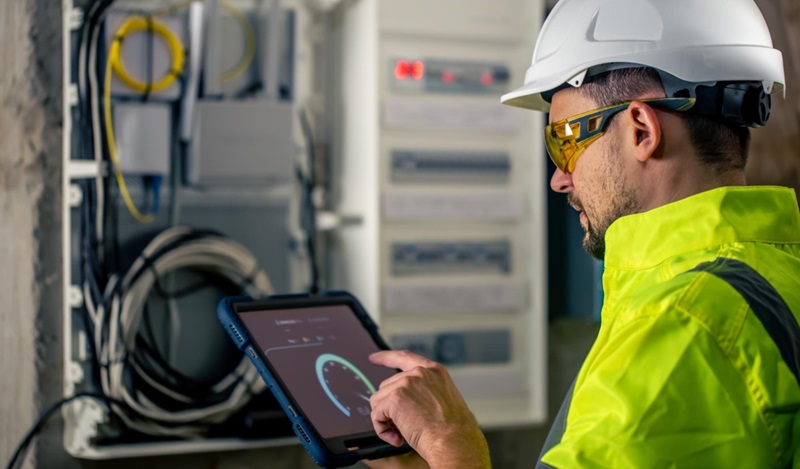How to Implement a Successful Predictive Maintenance Initiative to Reduce Maintenance Costs

In today’s fiercely competitive and fast-paced business landscape, staying ahead involves embracing innovative strategies to improve the efficiency of your day-to-day operations and reduce costs. One such strategy that’s been gaining prominence recently is predictive maintenance, a revolutionary approach that aims to predict equipment failures before they occur, thereby minimizing downtime and extending the lifespan of machinery.
Let’s take a closer look at a few essential ways to successfully implement a predictive maintenance program to reduce your overall maintenance costs.
Thorough data gathering
A successful predictive maintenance program relies on careful data collection. Precision and a strategic approach are key here. Using sensors and Internet of Things (IoT) devices, businesses can gather detailed information on operational aspects like temperature, pressure, vibration, and sound.
Continuous data collection establishes a baseline for normal operations, making it easier to spot deviations, which indicate there are potential issues with the equipment. The accuracy of predictions depends on the quality and quantity of collected data, leading to timely maintenance interventions and preventing unplanned expenses.
Historical data provides useful information and context for predictive analytics. Understanding machinery performance over time improves the system’s ability to recognize subtle patterns and anomalies. Involving frontline workers in data collection offers insights into operational nuances not immediately apparent in datasets. This collaborative approach ensures a more holistic understanding of machinery behavior.
Integrating advanced analytics and AI

Interpreting the complex data requires advanced analytics and the help of artificial intelligence (AI). These technologies excel at uncovering patterns and anomalies within data sets, tasks that are challenging and time-consuming for human analysts.
Implementing cutting-edge machine learning algorithms allows businesses to analyze historical and real-time data and predict potential equipment failures with remarkable accuracy.
Expanding on AI integration, we should mention the incredible adaptability of these systems. As new machinery models are introduced, AI algorithms have the capacity to learn and adapt, which consistently improves their capabilities. These sophisticated algorithms take into account factors like production demand and resource availability to recommend optimal times for maintenance activities, minimizing costs and disruptions and maximizing efficiency.
Employee training and engagement
The success of a predictive maintenance program depends on how well the team understands and engages with the new technology. Comprehensive training programs should cover everything from operating tools to interpreting complex data and implementing best practices in maintenance responses.
A culture of proactive maintenance brings a sense of ownership that leads to innovative approaches and a committed workforce. Regular workshops, interactive training sessions, and open feedback platforms also facilitate steady growth.
Given the rapid advancements in technology, keeping the workforce up to date on new features and functionalities ensures that they can leverage the full potential of predictive maintenance tools. Furthermore, creating a platform for knowledge sharing among team members fosters a collaborative environment, where insights and best practices can be exchanged.
Regular equipment testing

Monitoring the health and condition of your equipment by detecting unusual vibration patterns can signal potential mechanical issues. This type of comprehensive vibration analysis helps you understand and interpret the intricate signals that machinery emits in everyday use.
Naturally, a skilled and well-equipped personnel is needed for accurate data interpretation. We should also highlight the importance of predictive modeling. Predictive models can simulate potential scenarios based on historical data and offer a proactive approach to maintenance.
This improves the program’s ability to foresee issues and allows you to optimize maintenance schedule. On top of that, incorporating real-time monitoring into detailed analysis provides an understanding of machinery performance which is invaluable when responding to emerging issues.
Continual program evaluation
Continual evaluation and refinement are essential for maintaining an effective predictive maintenance program. Regularly assess performance using key performance indicators (KPIs) like reduced downtime, maintenance cost savings, and extended equipment lifespan.
Stay informed about new developments in predictive maintenance technologies, encourage feedback from all staff levels, and be open to adjustments based on insights and evolving business needs. This ongoing process ensures that your predictive maintenance program remains at the forefront of industry practices.
Comparing your predictive maintenance program’s performance with established benchmarks provides valuable insights into areas for improvement. Additionally, fostering collaboration with industry peers through forums and conferences can offer fresh perspectives and innovative ideas.
Emphasizing a proactive approach to program evaluation ensures that your maintenance initiative not only keeps up with current standards but also anticipates future industry trends, staying ahead of the curve.
In conclusion, a well-implemented predictive maintenance program reflects a business’s commitment to excellence, marking a stride towards a future where operational efficiency and reliability are not just aspirations but tangible realities.